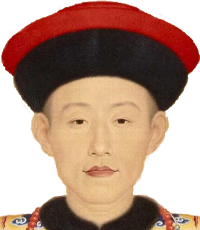Journey to the West
Xuanzang was a Buddhist monk from Chang’an, today’s Xi’an, who in the year 629 CE decided to travel all the way to India. Buddhism was a relatively recent arrival in China at the time and Chinese Buddhists often had to make due with very poor translations of Buddhist scriptures. The purpose of Xuanzang’s journey was to look for original texts in the Buddha’s own homeland from which more faithful translations could be made. He traveled westward into Central Asia and then southward through Afghanistan. Once Xuanzang reached his destination he spent the next thirteen years visiting various pilgrimage sites in the Indian sub-continent, studying with renowned teachers, and looking for manuscripts. When he returned home to Chang’an in 646, Xuanzang received a warm welcome. He obtained the emperor’s support in building a pagoda where the manuscripts could be stored and an institute was founded where the arduous task of translation began.
Journey to the West is an immensely popular Chinese novel from the sixteenth-century CE which gives an account of Xuanzang’s story, but it told as a comic adventure which mixes fantasy and folktales. In Journey to the West, Xuanzang is given four traveling companions by the Buddha himself – a monkey, a pig, an ogre, and a white steed, who actually turns out to be a dragon prince. The story, which has been filmed several times, and exists both in gongfu and children’s versions, soon becomes the vehicle for a series of amazing events, miraculous transformations and extended fighting sequences. Much of the book is set in the wild lands which separate China and India, where the deep gorges and tall mountains turn out to be populated with demons and animal spirits. Eventually the traveling companions all return home and are amply rewarded for their troubles. Xuanzang attains buddhahood and Jubadie, the pig, gets to eat all the excess offerings that worshipers bring to the altars of Buddhist temples. Journey to the West is a comic adventure, but also – for those who prefer to read it that way – an allegory of a group of pilgrims who travel together towards enlightenment, where the success of one of them depends on the success of the others.

